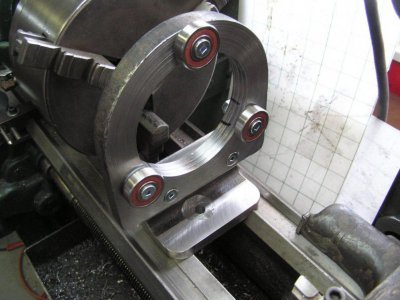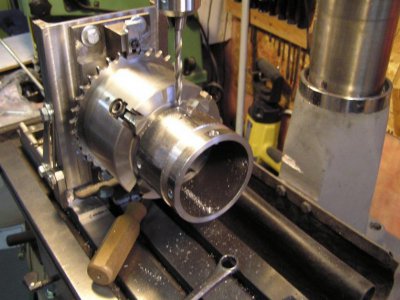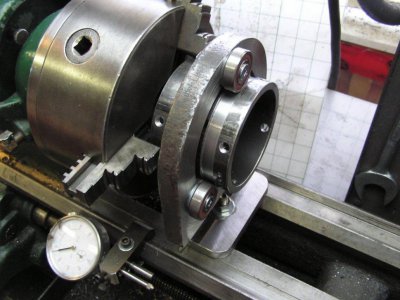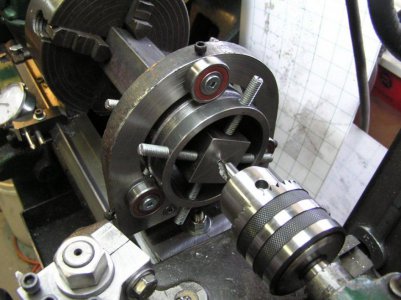- Joined
- Jun 17, 2011
- Messages
- 2,062
Ever used a cat-head steady? They have a couple of advantages.
You don't have to have a trued cylinder for the supports or bearings to run on. Rough or odd-shaped stock can be centered up for turning.
You don't get support or roller marks on your work piece. Check it out.
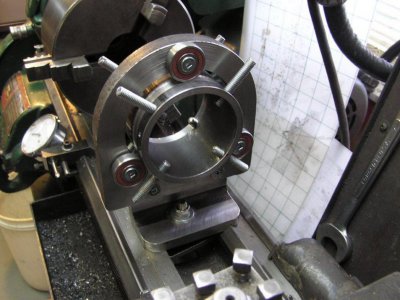
It all started out as a few pieces of scrap from the junkers. Heavy angle, 3"; pipe and an old, unused lifting ring.
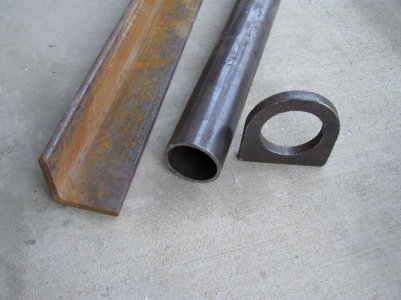
The lifting ring is faced on the lathe to clean it up.
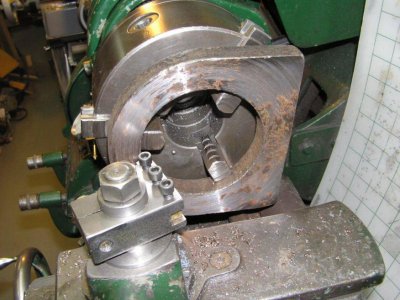
Holes are centered up for the mounting brackets and bearing axles using my first dividing head mounted on an angle table.
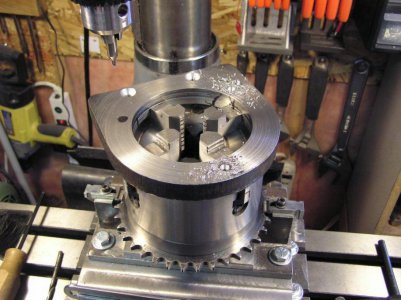
More to come.




You don't have to have a trued cylinder for the supports or bearings to run on. Rough or odd-shaped stock can be centered up for turning.
You don't get support or roller marks on your work piece. Check it out.

It all started out as a few pieces of scrap from the junkers. Heavy angle, 3"; pipe and an old, unused lifting ring.

The lifting ring is faced on the lathe to clean it up.

Holes are centered up for the mounting brackets and bearing axles using my first dividing head mounted on an angle table.

More to come.




Last edited:


